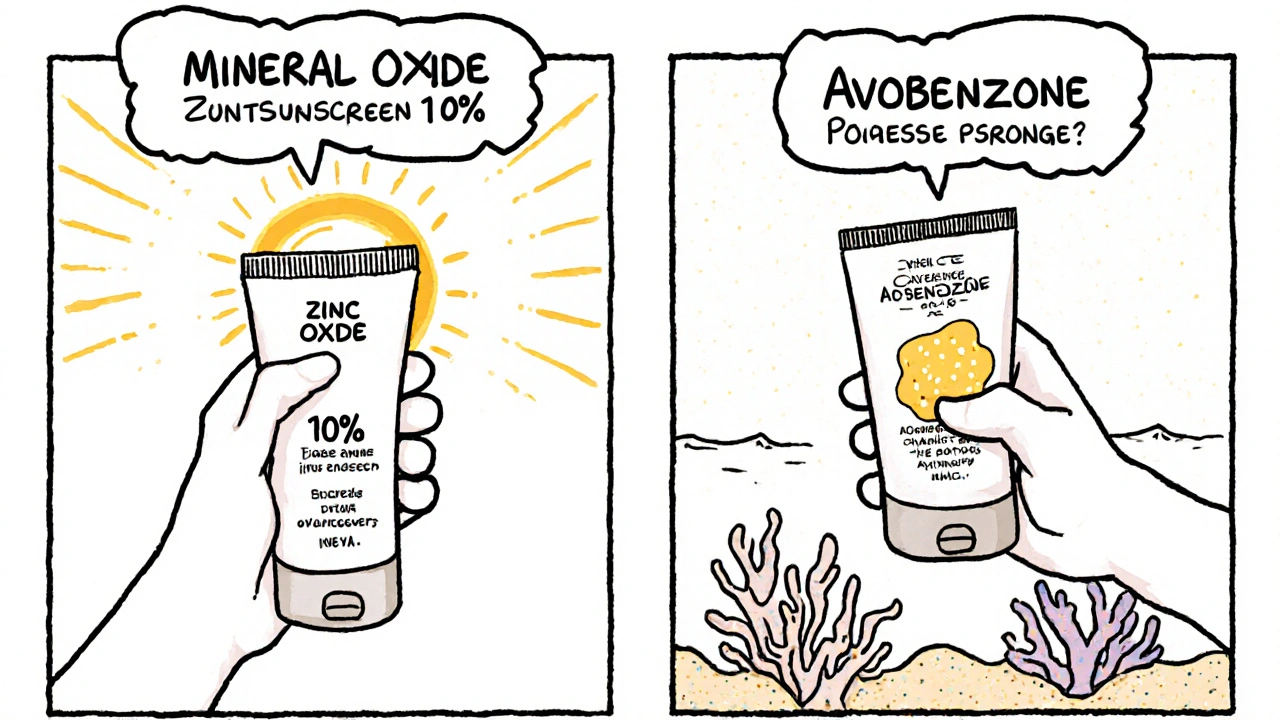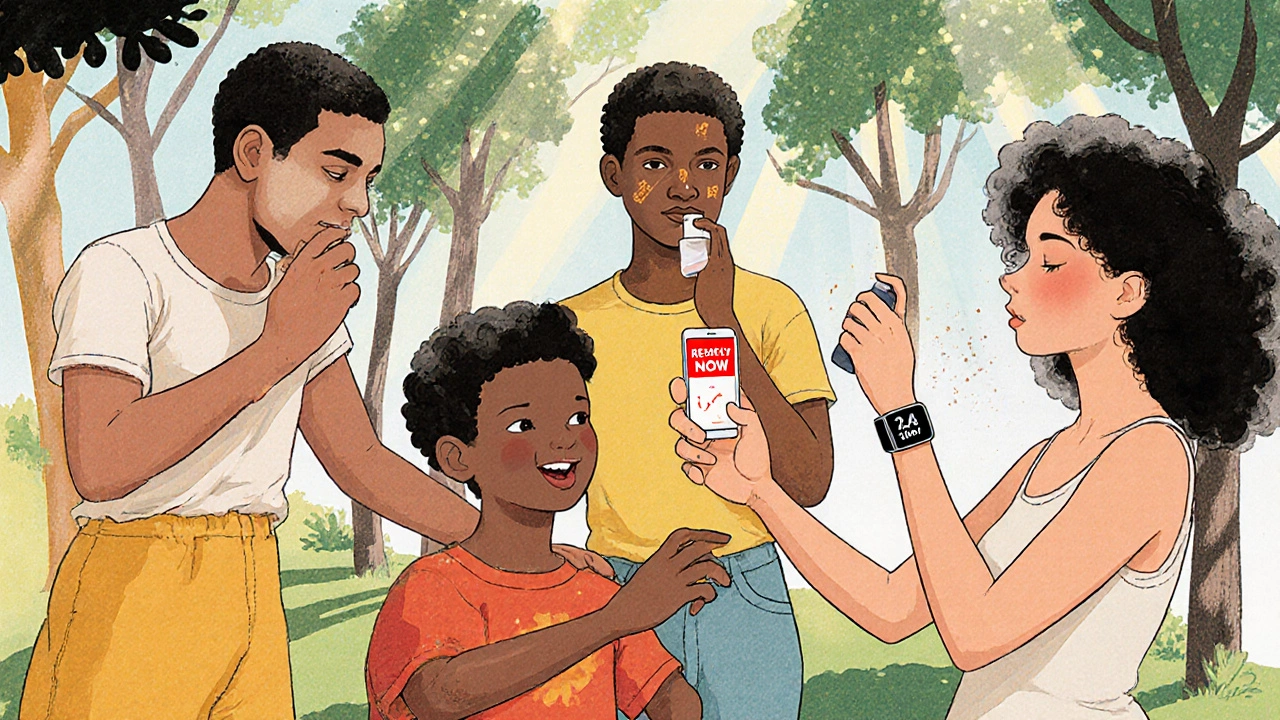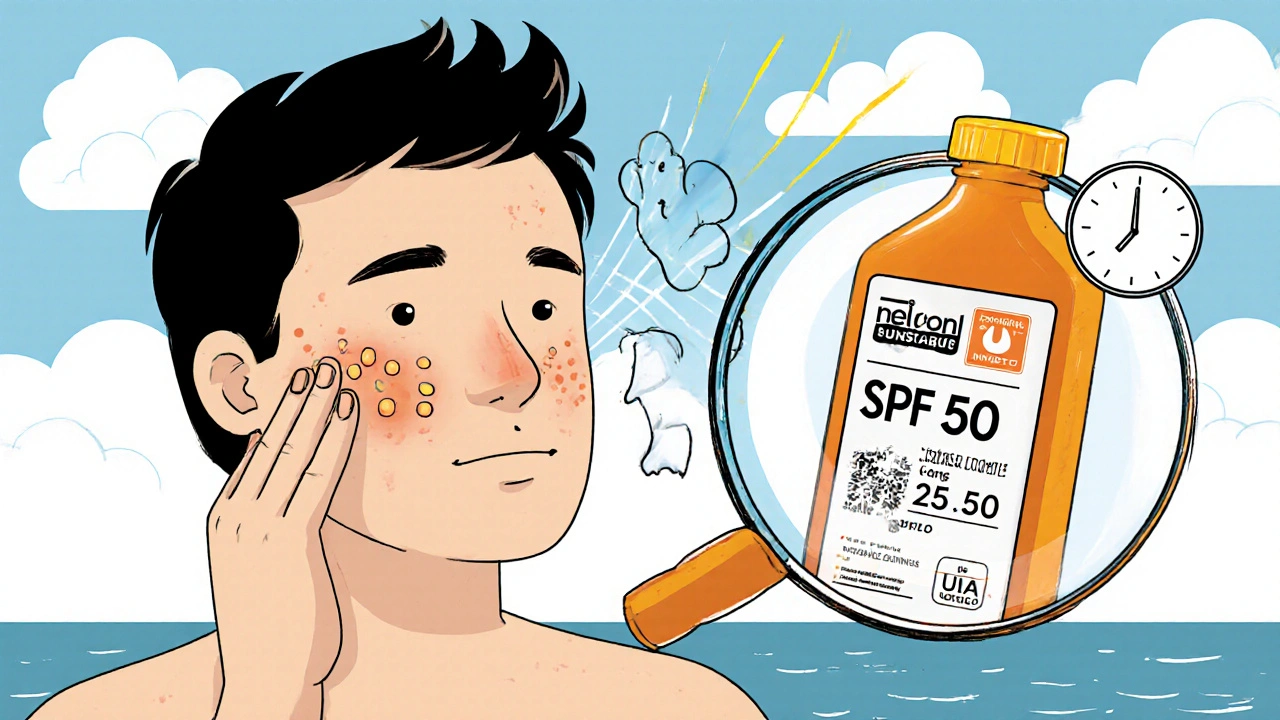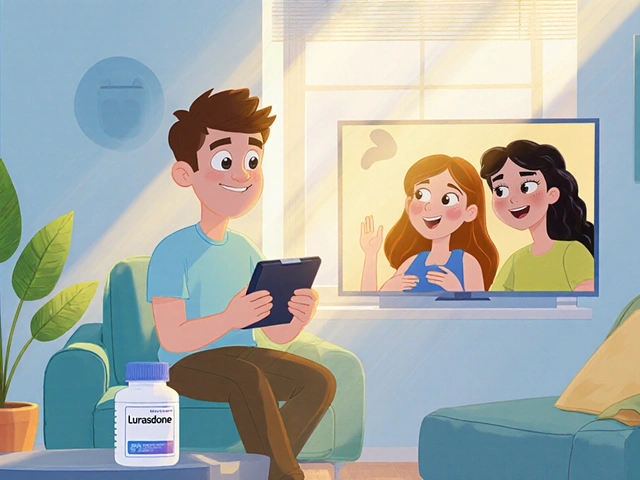Every year, millions of people buy sunscreen without really knowing what they’re getting. You see SPF 50 on the bottle, think you’re covered, and head outside. But here’s the truth: SPF doesn’t tell you the whole story. And if you’re not reapplying the right way, you might as well not be wearing it at all.
What SPF Actually Means (And Why Higher Isn’t Always Better)
SPF stands for Sun Protection Factor. It measures how well a sunscreen blocks UVB rays - the ones that cause sunburn. SPF 30 blocks about 97% of UVB rays. SPF 50 blocks 98%. SPF 100? Just 99%. That’s it. The jump from SPF 30 to SPF 100 gives you less than 2% more protection. Yet, SPF 100 products cost more, feel heavier, and trick people into thinking they can stay out longer. They can’t.
The FDA says sunscreen should only claim SPF values up to 60+ because anything higher is misleading. In 2025, new rules will require all broad-spectrum sunscreens to have at least SPF 30 to make that claim. If a product says SPF 15 and doesn’t say “broad spectrum,” it’s only protecting against sunburn, not skin cancer or aging.
Here’s the math: SPF 30 means it takes 30 times longer to burn than with no protection. But that’s only if you apply the full amount. Most people use half - or less - of what’s needed. That drops your protection to SPF 15 or lower. So even if you’re using SPF 50, you’re probably getting SPF 25.
Broad Spectrum Isn’t Just a Marketing Word
Broad spectrum means the sunscreen protects against UVA rays too. These are the rays that go deeper into your skin, cause wrinkles, age spots, and contribute to melanoma. UVA rays are present all day, every day - even when it’s cloudy. They’re also the reason you tan.
For a sunscreen to be labeled “broad spectrum,” it must pass a test called Critical Wavelength. It needs to block UV rays up to 370 nanometers. That’s the minimum standard set by the FDA. But not all broad-spectrum sunscreens are equal. In Consumer Reports’ 2025 testing, some mineral sunscreens labeled as broad spectrum only blocked UVA at levels comparable to SPF 10 - not SPF 50.
Chemical filters like avobenzone, octocrylene, and ecamsule are better at absorbing UVA rays. Mineral sunscreens use zinc oxide or titanium dioxide. Zinc oxide is the gold standard for UVA protection - it blocks the full range. Titanium dioxide? It’s good for UVB, weak for UVA. Many mineral sunscreens use a mix that doesn’t give full UVA coverage.
Look at the ingredient list. If zinc oxide is listed as 10% or higher, you’re getting solid UVA protection. If it’s below 5%, don’t assume it’s enough. And if you see “titanium dioxide” as the only mineral - be skeptical.
Mineral vs. Chemical: What Works Best for You
There are two main types of sunscreens: mineral (physical) and chemical. Mineral sunscreens sit on top of your skin and reflect UV rays. They use zinc oxide and/or titanium dioxide. Chemical sunscreens absorb UV rays and convert them into heat.
Mineral sunscreens work immediately. No waiting. That’s great for kids or people with sensitive skin. But many leave a white cast - especially on darker skin tones. In testing, 68% of users with Fitzpatrick skin types IV-VI reported visible residue. Some brands, like Black Girl Sunscreen, have improved this, but inconsistent formulas still exist. One 2025 test found a product labeled SPF 50 only delivered SPF 13.
Chemical sunscreens blend in better. They’re thinner, less noticeable, and often more effective at blocking both UVA and UVB. Top-rated products like La Roche-Posay Anthelios Melt-in Milk SPF 60 scored 92/100 in protection. But they need 15-20 minutes to activate. And some ingredients - like oxybenzone and octinoxate - are banned in Hawaii and Palau because they harm coral reefs. Even at tiny levels (62 parts per trillion), they damage coral DNA.
If you have rosacea, melasma, or sensitive skin, mineral sunscreens with zinc oxide (like EltaMD UV Clear SPF 46) are often recommended. They’re anti-inflammatory. If you’re active, swim often, or sweat a lot, chemical sunscreens tend to hold up better - as long as they’re water-resistant.

Reapplication: The Most Ignored Rule
Here’s the hard truth: no sunscreen lasts all day. Not even SPF 100. Not even “all-day” formulas. The FDA requires all sunscreens to be reapplied every two hours - and immediately after swimming, sweating, or towel-drying. That’s not a suggestion. That’s science.
But here’s what happens in real life: only 14% of people at the beach reapply sunscreen every two hours. A 2024 study found 72% of users skip reapplication entirely during long days outside. Why? Because it’s inconvenient. You’re eating, socializing, or just not thinking about it.
And towel-drying? That removes up to 80% of sunscreen. Even if you’re “water-resistant,” you still need to reapply after drying off. Water-resistant doesn’t mean waterproof. It means it lasts 40 or 80 minutes in water - then it’s gone.
Pro tip: Keep a small bottle in your bag. Use a stick for touch-ups on your nose, ears, and lips. Spray sunscreens are popular - 28% of the market - but they’re hard to apply evenly. You need to spray generously and rub it in. Don’t just mist. You’ll miss spots.
How Much Should You Actually Use?
Most people use half the amount they need. The FDA recommends 2 milligrams per square centimeter of skin. For your face, that’s about 1/4 teaspoon - or five pea-sized dots. Spread them across your forehead, cheeks, nose, chin, and neck. Then rub it in. Don’t just dab it on.
For your whole body, you need about one ounce - enough to fill a shot glass. That’s a lot. But if you’re wearing a swimsuit, you need that much. If you’re only doing your face and neck, 1/4 teaspoon is enough. Under-application is the #1 reason people get sunburned even when they “used sunscreen.”
Some brands, like CeraVe, have videos showing exactly how to apply. Others don’t. If you’re unsure, use a UV camera app like Sunscreenr. It shows where you missed spots. It’s eye-opening.
What’s Changing in 2025 and Beyond
The FDA is finalizing new rules in late 2025. Sunscreen labels will be clearer. Only zinc oxide and titanium dioxide will be classified as “generally recognized as safe and effective.” Twelve other chemical filters - including oxybenzone and octinoxate - may be banned unless manufacturers prove they’re safe. That’s why you’re seeing more mineral sunscreens on shelves.
Environmental concerns are pushing innovation. Brands like Supergoop! and Caravee are adding antioxidants like niacinamide and vitamin E to help repair skin. Some are even testing UV-sensing wearables that alert you when it’s time to reapply. Shade Smart, launching in Q2 2025, syncs with your phone and reminds you based on your location, UV index, and skin type.
But here’s the catch: mineral sunscreen sales are rising, but their protection still lags behind chemical ones. In 2025 testing, mineral sunscreens averaged 34/100 in UV protection. Top chemical sunscreens scored 90+. The gap is real. And until mineral formulas improve, you can’t assume “natural” means “better.”

What to Look For on the Label
Here’s your quick checklist before buying:
- SPF 30 or higher - No exceptions.
- Broad Spectrum - Must say it on the front.
- Water-resistant (40 or 80 minutes) - If you’ll be near water or sweating.
- Zinc oxide 10% or more - If you want mineral protection.
- Avobenzone, octocrylene, or ecamsule - Good chemical UVA blockers.
- Avoid oxybenzone and octinoxate - If you’re near reefs or have sensitive skin.
Price? Doesn’t matter. CVS Health SPF 50 spray costs $2.99. JLo Beauty’s SPF 30 moisturizer is $55. The median price is $14.75 per ounce. The most expensive isn’t the best. The one you’ll actually use - and reapply - is.
Real-World Failures and Wins
Not all sunscreens work as claimed. In 2025, Consumer Reports tested 107 products. One labeled SPF 30 delivered only SPF 4. Another, marketed for kids, gave only SPF 13. A tinted mineral sunscreen oxidized on skin and turned orange within two hours.
But there are winners. La Roche-Posay Anthelios, EltaMD UV Clear, and Supergoop! Unseen Sunscreen consistently rank high. People with darker skin love Supergoop!’s invisible finish. Those with eczema swear by CeraVe’s hydrating formula. And Caravee’s niacinamide-infused sunscreen helped 89% of users improve skin barrier function in a 30-day trial.
The best sunscreen is the one you’ll use every day - even when it’s cloudy. Even when you’re just running to the car. Even when you’re not planning to stay out long. UV damage adds up. And it doesn’t wait for you to be ready.
Final Rule: No Exceptions
Use SPF 30+ broad spectrum every single day. Apply 1/4 teaspoon to your face. Reapply every two hours. Reapply after swimming or sweating. Don’t trust the “all-day” claims. Don’t skip it because you’re “not going to the beach.” UVA rays penetrate windows. They’re in your car. They’re on your way to work.
And if you’re not sure? Try one of the top-rated products. Test it for a week. See if it feels good. See if you remember to reapply. If you do, you’re doing better than 85% of people.
Protection isn’t about perfection. It’s about consistency.
Is SPF 50 better than SPF 30?
SPF 50 blocks 98% of UVB rays; SPF 30 blocks 97%. The difference is minimal. What matters more is how much you apply and how often you reapply. Most people use too little, which makes SPF 50 perform like SPF 25. SPF 30, applied correctly, is enough for daily use.
Do I need sunscreen on cloudy days?
Yes. Up to 80% of UV rays penetrate clouds. UVA rays, which cause aging and skin cancer, are especially strong even when the sun isn’t visible. Daily sunscreen use reduces melanoma risk by 50%, according to the American Academy of Dermatology.
Why does my mineral sunscreen leave a white cast?
Mineral sunscreens use zinc oxide or titanium dioxide, which sit on the skin and reflect light. On darker skin tones, this often appears as a white or gray cast. Newer formulas use micronized particles or tinted bases to reduce this. Look for products labeled “sheer,” “tinted,” or “for deeper skin tones.”
Can I use last year’s sunscreen?
Check the expiration date. Most sunscreens last 3 years unopened. Once opened, they’re good for about 12 months. Heat and sunlight degrade the active ingredients. If it smells off, changed texture, or separated, throw it out. Expired sunscreen won’t protect you.
Is spray sunscreen safe and effective?
Sprays are convenient but hard to apply evenly. You need to spray generously and rub it in - don’t just mist. The FDA warns that spray sunscreens can be inhaled, so avoid spraying directly on the face. Use your hand to apply it, then rub it in. They’re fine for hard-to-reach spots like the back, but not ideal as your only sunscreen.
Should I use sunscreen if I have dark skin?
Yes. While darker skin has more natural melanin, it’s still vulnerable to UV damage, skin cancer, and hyperpigmentation. Melanoma is often diagnosed later in people of color, leading to worse outcomes. Broad-spectrum sunscreen helps prevent dark spots, premature aging, and cancer - regardless of skin tone.





Amy Hutchinson
Okay but like… why do they make SPF 100 if it’s literally just a scam? I bought one last summer thinking I’d be invincible and still got burned like a damn lobster. 😑
Turns out I was using half the amount I needed. Now I just use SPF 30 and reapply like my skin depends on it… because it does.
Archana Jha
SPF is a corporate lie designed to sell more bottles. The real truth? The sun is controlled by HAARP and the FDA is in on it. They want you to buy expensive creams so you forget that natural shade and hats have been working for 10,000 years. Also, zinc oxide is basically a mineral mind-control chip. I stopped using sunscreen after I read a blog post by a guy in Serbia who said UV rays are just 5G in disguise. My skin has never been better. 🌞👽
Aki Jones
Let’s be real: the FDA’s ‘broad spectrum’ standard is a joke. 370 nanometers? That’s barely covering the UVA-I spectrum. The real threshold should be 380nm minimum. And don’t even get me started on the ‘water-resistant’ claims-those are tested in lab conditions with perfect application. In the real world? You’re getting 40% less protection after 30 minutes of sweat. And don’t even mention spray sunscreens-inhaling nanoparticles of titanium dioxide? That’s not sunscreen, that’s a pulmonary risk. The industry is exploiting regulatory loopholes while consumers pay the price in melanoma rates. And yes-I’ve read the full FDA guidance documents. Twice.
Jefriady Dahri
Bro, I used to skip sunscreen because I thought I was ‘too dark’ to burn… until I got a dark spot on my cheek that wouldn’t go away. 😔
Started using EltaMD UV Clear last year-no white cast, feels like moisturizer, and I actually remember to reapply now. I keep a mini bottle in my backpack. My cousin who has eczema switched too and says her flare-ups dropped by 70%. You don’t need fancy brands. Just use something that feels good and stick with it. Consistency > perfection. 🙌
Sharley Agarwal
SPF 50 is a scam. You’re wasting money. And mineral sunscreens? They’re useless unless they’re 20% zinc. Most brands lie. And sprays? Don’t even bother. You’re just spraying chemicals into the air and pretending you’re protected.
Shivam Goel
Let’s analyze the data: Consumer Reports tested 107 products. 32% underperformed by more than 50% of labeled SPF. That’s not a flaw-it’s systemic negligence. And yet, 78% of consumers trust the label without verifying. The average user applies 0.5 mg/cm² instead of 2 mg/cm². That’s a 75% reduction in protection. Add in reapplication failure rates (72%) and you’re looking at a public health failure masked as personal responsibility. The real villain? Marketing. Not the sun.
Dolapo Eniola
Y’all in the West are so obsessed with sunscreen, you forget we’ve been living under this sun for centuries without white lotion on our faces. In Nigeria, we use hats, scarves, and shade. That’s real protection. You’re buying into a capitalist scam to sell you $50 creams while your ancestors survived with palm oil and dignity. 🇳🇬🌞
Josh Zubkoff
Okay, I’ve read every word of this and I’m still not convinced. First, the FDA? They’re bought off by Big Pharma. Second, ‘broad spectrum’ means nothing if the testing is done in controlled labs with perfect application. Third, I’ve seen studies that say zinc oxide nanoparticles can penetrate the skin and cause oxidative stress. Fourth, I’ve been using coconut oil for 12 years and I’ve never had skin cancer. Fifth, why are we not talking about how vitamin D deficiency is skyrocketing because people are terrified of the sun? Sixth, if sunscreen is so effective, why are skin cancer rates still rising? Seventh, I think this whole thing is a distraction from environmental toxins. Eighth, I’ve got a cousin who works at a dermatology clinic and she says 80% of their patients are using sunscreen wrong. Ninth, I’m not saying don’t protect yourself-I’m saying this entire industry is built on fear. Tenth, and finally-why is there no independent, non-industry-funded testing? Eleventh, I’m not paranoid. I’m informed.
fiona collins
Reapplication every two hours is non-negotiable. I carry a tiny tube in my purse. Even on cloudy days. Even if I’m just walking to the mailbox. It’s the only thing I do for my skin that’s 100% effective. No drama. Just consistency.
Rachel Villegas
I used to hate sunscreen because it felt greasy. Then I tried Supergoop! Unseen Sunscreen and it changed everything. No white cast, no smell, just… invisible protection. I put it on every morning like I brush my teeth. I don’t think about it anymore. And honestly? That’s the goal.
giselle kate
They call it ‘broad spectrum’ but they’re still allowing oxybenzone in 80% of products. That’s not protection-that’s chemical warfare on your skin and the ocean. And don’t get me started on how they market mineral sunscreens as ‘natural’ while using nano-particles that are anything but. This isn’t science. It’s capitalism dressed up as wellness. We’re being sold fear and overpriced lotion while the real solutions-shade, clothing, timing-are ignored. Wake up. The sun isn’t your enemy. The corporations are.